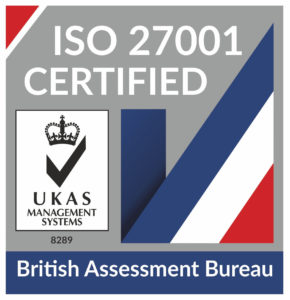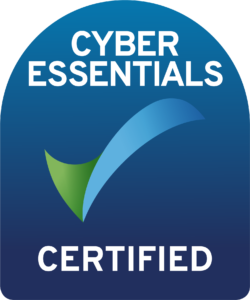
HaloITSM Guides
Documentation to assist with the setup and configuration of the HaloITSM platform
Action Button Configuration
Actions are a powerful component of Halo, designed for all the ways your employees want to work. Actions allow you to create customisable buttons on your tickets and let you define what happens when you click them. This flexible functionality gives you the ability to mould Halo around your business processes.
Action buttons can be added, edited and deleted as needed in the Tickets, Projects, and Opportunities modules of Halo .
Understanding Action Buttons
In the product’s standard setup, we have suggested some sensible options for action buttons within tickets.
Ultimately, all of the action screens have the same structure behind them, and because of this, can be tailored to your exact requirements. Here we will show you how to use the actions screen, and its many features. Action buttons can also have this screen switched off, so it will process a series of defaults, without showing the Agent this screen. We will cover this later on.
Understanding the Action Button Screen
In this screenshot, the action screen has appeared for a basic "Email User" action button. The main parts of the new action form are:
A) The email To/Cc details. This only shows if the 'Send Email to User' envelope icon in the top right is highlighted (it can be highlighted or not highlighted by default).
B) The action note box, for free text which can include lists, screenshots, coloured formatting, etc.
C) Configurable action fields, selected from the Actions Field List.
When creating an action button from scratch, the structure of that action button would be the same as this one. Areas B and C will always appear on the Action screen. Area C will only show when the Send Email To User option has been switched on. You will see in area A here, the option has been made visible and is highlighted.
To edit this, go to Configuration > Tickets > Action > Edit Action > Defaults Tab.
In area A,the Email functionality allows an Agent to:
Send From a selected Mailbox (if more than one set of SMTP details have been added to the configuration, and are active). If you cannot see this field, go to the Options tab of the action button setup.
Edit the email addresses that the action email will be sent to. The To Address is populated with the End-users email address. From the top of the action screen, you will remember the End-user was "Requestor 1", and you can see Requestor 1's email is here automatically. If the end-user emails in from their email address, Halo will always use that email address for ongoing communications, until told to do otherwise.
Edit the Carbon Copy and Blind Carbon Copy (CC, BCC respectively) fields, which function as you would expect in any Email client. If you cannot see BCC, go to the Options tab of the action button setup.
Edit the Subject line.
There are clickable buttons here as well, leading to other functionality. However, as displayed here, all of these fields can be edited as required, and the screen can be cancelled at any time, to start from the beginning again.
In area B, this is a free text box, to write your message to the end-user. It can be written in any style you would like, such as a standard email format you would use in Email clients such as Microsoft Outlook. You can include images and screenshots, add lists, and much more to this white box.
In order for what is entered in this box to show up in an email, the selected email template will need to contain the variable $RICHACTIONNOTE. The variable will be included in most email templates by default. More on this later.
In area C, the Action Button fields lists will appear at the bottom of the Action. Here, the Status and Man Hours fields have been chosen to display, and the Send Email to User option has been left to display. We can use these fields to set the status of the ticket after we have sent the email, and record the time we have taken to complete this activity. So, if it took us two minutes to write a quick email to Peter (in this example), we can record that time here.
Understanding Action Screen Settings
Administrator users can access the action button setup in Configuration > Tickets > Actions. Click on an action to see the Action button's settings and edit the settings via the "Edit" link in the top right. Alternatively, hit "Add a new Action".
In the "Details" tab, you can set some specific details for the action button. These are:
Outcome Description - This text will describe the action after it has been carried out on a ticket. It can be different to the action button's caption/label.
Sequence - The order action buttons appear in, can be set here manually, but usually ordered by dragging and dropping in the main Action List screen.
Button Name - What text will appear on the action button, on a ticket.
Action Colour - Set a colour for the action, so it may be more easily identified
Action Button is Visible - Toggle the action button being visible in all areas.
Action is visible outside of Workflows - Toggle the action button being visible if not specifically configured to be visible on a Workflow step.
System Use - There are list of system uses for action buttons, and selecting them here will allow the action to trigger special functionality, or affect other parts of the program.
Is a Quick Action - The new action screen will not appear at all, but all of the settings in Details and Defaults tabs of the Action button set up will be applied, and an action will be logged.
Status After Action - You can set the next status of the ticket, once the action has been added. It applies as soon as you click Save or Send on the action. Leave it blank for the Agent to decide what the status is.
Response Behaviour - If using the Service Level Agreement (SLA) timings for response times, you can set the respond timer to reset automatically, do not respond, or follow the default behaviour set in Configuration > Tickets > Service Level Agreements.
Start a new Workflow - Starts the specified Workflow.
Start An Approval Process - Starts the specified Approval Process. If "Choose when doing action" is selected, it will ask the Agent which Approval Process to start.
In the "Defaults" tab, you can set the following defaults:
Send an Email - Choose if the action will send an email by default.
Hide from User - Choose if the action is not intended to be seen by the user. The action will not show in the User's web access to the ticket.
Put on SLA Hold - Choose if the action will pause the SLA timer on the ticket.
Release from SLA Hold - Choose if the action will restart the SLA timer on the ticket.
Mark as Important - Marks the ticket as important, with a visual indicator in the main ticket list.
Mark agent a Follower of the Ticket - Adds the Agent carrying out the action to the Followers list on the ticket.
Email Template - Selects the email template to use when sending an email. If "Default" is selected then the template used will depend on the System Use selection.
Default Ticket Type - Selects the default Ticket Type to be used if the Ticket Type field is included in the action's field list.
Default Team - Selects the default Team to be used if the Team field is included in the action's field list.
Default Agent - Selects the default Agent to be used if the Agent field is included in the action's field list.
Charge Rate - Selects the default Charge Rate to be used if the Charge rate field is included in the action's field list.
Default Hours - Used as the default time to be logged when carrying out the action.
Default Hours - Used as the default amount of 'Non-Billable' Hours to be logged when carrying out the action.
Default Note - Used as the default note on the action (pre-populates the text box shown in area B above).
Default "To"/"Cc" from Ticket - Toggle the use of the To and Cc overrides.
To/Cc address overrides - Override ticket To/Cc fields just for this action.
Popular Guides
- Asset Import - CSV/XLS/Spreadsheet Method
- Call Management in Halo
- Creating a New Application for API Connections
- Creating Agents and Editing Agent Details
- Departments and Teams
- Halo Integrator
- Importing Data
- Multiple New Portals with different branding for one customer [Hosted]
- NHServer Deprecation User Guide
- Organisation Basics
- Organising Teams of Agents
- Step-by-Step Configuration Walk Through



